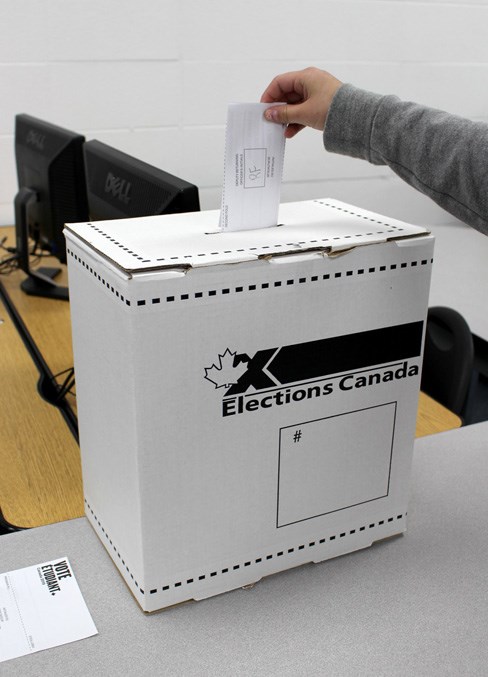Local students had their say in the federal election after getting informed about the parties vying for their support.
Schools in both the Lakeland and Fort McMurray-Cold Lake ridings joined more than 1.1-million students across the country in the CIVIX Canada’s Student Vote to choose who would represent them best at the federal level.
When it came to the Lakeland riding, Conservative candidate Shannon Stubbs received just over 4,000 votes to be re-elected.
In total, 6,605 student votes were cast within the riding.
NDP candidate Jeffrey Swanson came in second with 846, followed by the Green Party’s Kira Brunner with 567, People’s Party of Canada member Alain Houle had 432, Liberal Mark Watson 406, Libertarian candidate Robert McFadzean finished with 228, and Roberta Graham with the Veterans Coalition Party had 120.
Some of the local schools in the Lakeland that participated included Bonnyville Centralized High School (BCHS), Glendon School, H.E. Bourgoin Middle School, École des Baux-Lacs, Dr. Bernard Brosseau School, and Notre Dame High School (NDHS).
When it came to BCHS’ results, teacher Julie Hutchison wasn’t surprised they fell in line with their adult counterparts.
“By high school, kids don’t really reflect their parents views 100 per cent of the time, but I think the amount of Conservative votes in our province and constituency is quite prevalent,” she said.
Ahead of casting their votes, students attended the all candidates forum at Dr. Brosseau and researched who was on the ballot.
“We really wanted to focus on getting them to truly understand what each of the party’s platforms were, and how different interpretations of events can come across in the media. We really tried to dig deep, understand what the candidates were promising, and how that would affect them in their lives afterwards,” detailed Hutchison.
NDHS teacher Natalie Mcguire agreed.
“These are our future voters. It’s important to teach them that they have to be educated, and know that being democratic means you have a role to play and you have to take part in the election if it’s going to work properly,” she said.
Although students were encouraged to vote for the party who they believed would represent them the best, Maguire noted it would be difficult for them not to be pressured by those around them.
“We thought it was really important to get them to start thinking on their own, but I think they’re all being influenced in some way. Whether it’s their peers, or whether it’s what they hear on the news, or from home. It’s a hard task to ask them to put all that aside and think for themselves.”
In the Fort McMurray-Cold Lake riding, there were 5,099 student voters. Conversation candidate David Yurdiga received close to 50 per cent of the votes (2,525) to get re-elected.
Liberal candidate Maggie Farrington was next with 811 votes, followed by NDP Matthew Gilks with 700, the Green Party’s Brian Deheer had 562, and the People’s Party of Canada candidate Matthew Barrett had 501.
Ardmore teacher Kim Seward described the entire experience as exciting.
“I’m very interested in democracy, and how society works and how government functions,” she explained. “I tried really hard to impress that upon my students. I’m a social studies teacher, and we’re trying to make good citizens... that are active in our communities and that’s what politics is.”
Assumption Jr./Sr. High School teacher Cassie Gonzalvo wasn’t surprised their student results were on-par with the general election.
“The Conservative definitely was the winner. We did have an odd Green Party candidate coming in second. We actually pooled our students at Assumption... (on) their top four important election topics. In no particular order it was pipelines, secondary education, healthcare, and climate change. Apparently, these kids also care about climate change,” she stated.
Cold Lake Middle School, Art Smith Aviation Academy, Holy Cross Elementary, and Nelson Heights Middle School were some of the other local schools that participated.
The Student Vote program is open to Canadian schools for students from Grades 4 to 12.
Director of content with CIVIX Canada Dan Allan said they hoped allowing students to organize their school event makes them look forward to participating when they’re older.
“We aim to get students excited and interested in being able to vote when they can is by making the actual vote itself as exciting and interesting as possible.”
The student results Canada-wide fell in line with the official ones for the most part, with the Liberal party forming a minority government with 110 seats with 257,651 votes.
The NDP for the students, formed the official opposition with 99 seats, followed by the Conservatives with 94 seats, 28 seats went to the Green Party, and the Bloc Québecois received nine seats.



